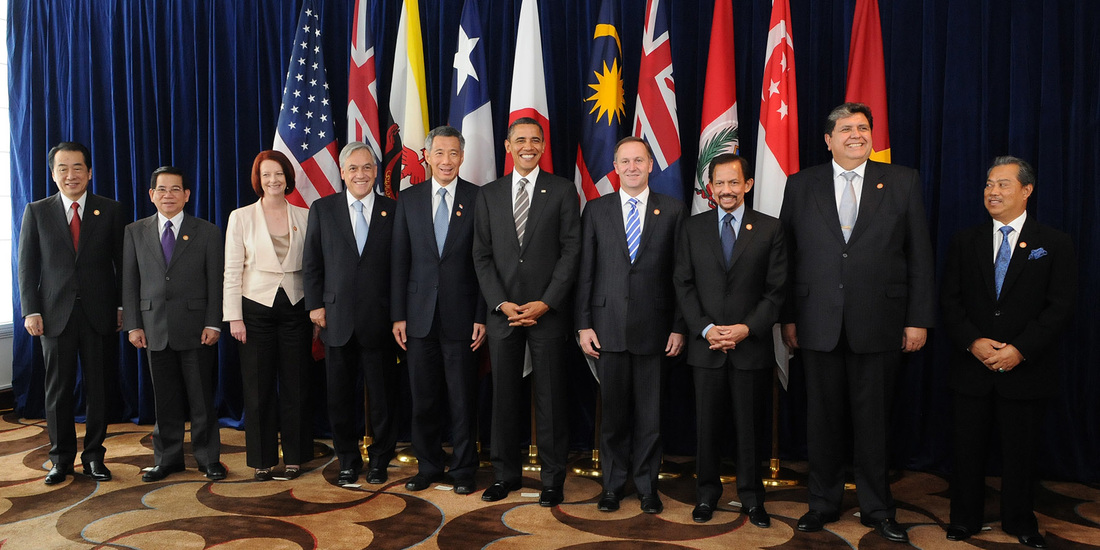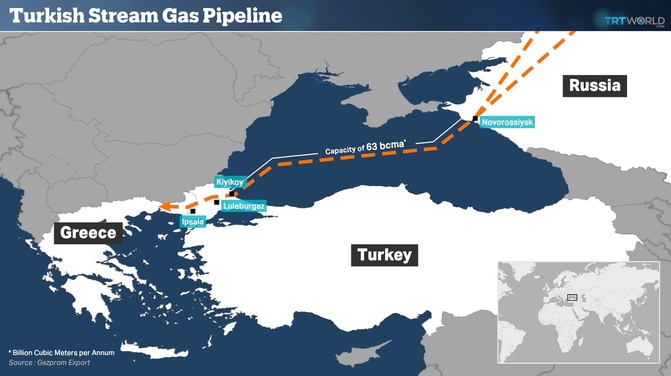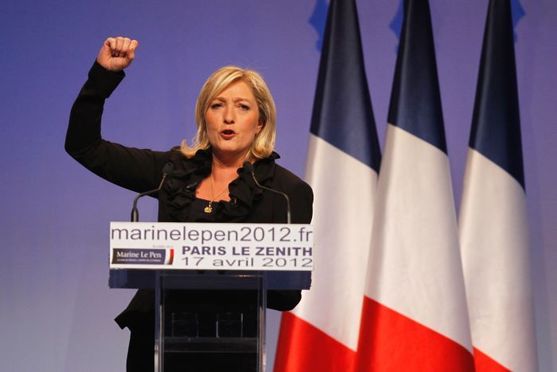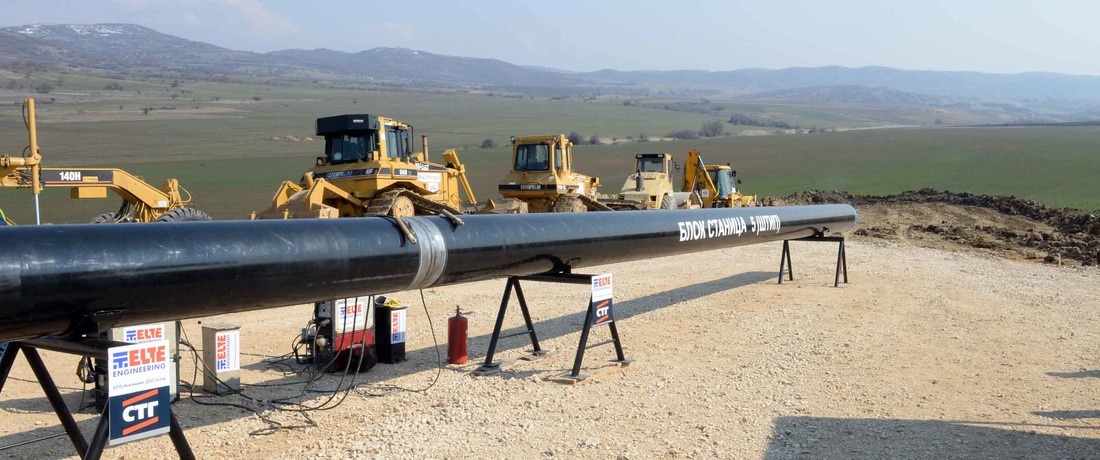 Leaders of TPP Member States // Wikimedia Commons Leaders of TPP Member States // Wikimedia Commons by Madeline Merrill As November 8 creeps ever closer, American international trade policies shift increasingly into the public dialogue. At the forefront of the conversation is the Trans-Pacific Partnership, as negotiated by President Obama and his administration. The international pact is not the first of its kind; however, this particular deal is drawing significant public scrutiny, as leading members of both political parties have voiced concerns with the details of the dealings. The pact is an attempt to deepen economic ties between the nations of Japan, Malaysia, Vietnam, Singapore, Brunei, Australia, New Zealand, Canada, Mexico, Chile, Peru, and the United States, and to create a single market in the likeness of the European Union (BBC, 2016)[1]. This collection of countries comprises 40% ($107.5 trillion) of the world’s total gross domestic product, 26% of world trade, and 793 million consumers worldwide.[2] As of October 5, 2016, TPP ratifications were incomplete - six of the twelve TPP member countries must complete domestic ratification processes for the pact to go into effect (Asia Trade Center, 2016).[3] The most important of these legislature-ratification countries are Japan and the United States; their two economies combined are just under 80% of the total GDP of the signatories (Putz, 2016).[4] Congress is poised to vote in the coming weeks to either accept or reject the international trade deal in its current form. As Congress moves into the post-election lame duck session - a session that typically lasts just four short weeks - the world watches as our representative democracy deliberates on the details of this particular trade deal. Congress has competing priorities, including appropriations legislation and a pending new administration. Observers worry that the deal will not come to a vote, or will be delayed until the next president assumes office. Presidential candidates Clinton and Trump have both publicly denounced the Trans-Pacific Partnership as a trade deal unfit for American workers, and as an agreement that does not advance American economic interests. Both believe that the deal does not do enough to protect American jobs or to advance small business interests. However, presidential candidate Clinton originally backed the trade deal, a move which has plagued campaign by attracting anger from many voters from manufacturing communities in decline during this election cycle. Former presidential candidate Bernie Sanders and leading figures from both the Democratic and Republican parties call into question Secretary Clinton’s reversed position on the trade deal. Many have expressed concerns that she might later endorse the negotiations and continue the ratification process, if she is elected into office. Somewhat surprisingly, 51% of Americans consider free trade agreements to be good for the country, according to studies conducted by the Pew Research Center in March of 2016. This national consensus for open trade runs counter to political rhetoric, as both leading presidential candidates tout the TPP as an economic mistake. Those opposed to the TPP argue that the deal does nothing to address American manufacturing, to reverse domestic declining wages, to protect domestic innovation, or to end currency manipulation (Wolff, 2016).[5] However, the Office of the United States Trade Representative notes that the deal will eliminate over 18,000 foreign tariffs on Made-in-America exports. Reducing these tariffs will allow small American businesses, farmers, ranchers, and manufacturers to compete globally, and to enter new competitive markets. In 2014 alone, the United States exported $56 billion in machinery products to TPP countries[6]. By lowering the cost of trading with these other eleven Pacific Rim markets, the United States may enhance its economic competitiveness and expand its influence in the global agriculture, automotive, information and communications technology markets. Economists project that American exports will increase by $123.5 billion by the end 2025, should the TPP negotiations pass.[7] Many Americans see the TPP as an expansion of the North American Free Trade Agreement (NAFTA), which is popularly blamed for much of the decline of the US manufacturing industry. NAFTA arguably outsourced American manufacturing jobs to Mexico, China, and other countries with lower production costs and cheaper labor after its approval by President Bill Clinton in 1994 (Morley, 2006).[8] However, should Americans continue to pay the “Made-in-America” export tariff, and should Congress fail to ratify the Trans-Pacific Partnership during this lame duck session, American farmers, ranchers, and manufacturers could fall behind in the competitive global economy. [1] http://www.bbc.com/news/business-32498715 [2] https://www.thebalance.com/what-is-the-trans-pacific-partnership-3305581 [3]http://www.asiantradecentre.org/talkingtrade//special-edition-tpp-ratification-status-sheet-updated [4] http://thediplomat.com/2016/02/tpp-the-ratification-race-is-on/ [5] http://fortune.com/2016/08/17/obama-tpp-congress-lame-duck-trade/ [6] https://ustr.gov/sites/default/files/TPP-Overall-US-Benefits-Fact-Sheet.pdf [7] https://www.thebalance.com/what-is-the-trans-pacific-partnership-3305581 [8]https://www.thetrumpet.com/article/2061.24.80.0/economy/the-death-of-american-manufacturing
0 Comments
By Gerald Warburg
Election Day in 2008 yielded a much-studied map of the historic Barack Obama victory. In red and blue, it portrayed a coast-to-coast Democratic Party victory, with the only the South and parts of Appalachia, pockets in the industrial Midwest, and the dry lands between the Rockies and Sierras dominated by the GOP. It was hailed by the New York Times as ushering in what some analysts predicted would be a generation of political dominance for Democrats. Exactly twenty-four months later, overly optimistic Democrats were hit by the Tea Party tidal wave. Not only did Republicans seize back control of the House, they also won control of numerous governorships and state legislatures, thereby seizing control of reapportionment, voter registration and gerrymandering electoral districts for the decade ahead. Republican Party officials subsequently built a farm team so strong that more than a dozen credible candidates emerged to try to succeed President Obama. So much for the Democrats’ generational mandate. As analysts study the upcoming vote in 2016, they would do well to recall this comeuppance. It serves to remind us that little remains static in our politics, even when we consider efforts at Bush-Clinton restoration. The pace of political change is itself accelerating. Americans have long been restless, ready to try another tack, or to move to another town to advance their interests. The map will change again, and soon. Our post-World War II politics have been shaken repeatedly. Suburban white flight offered openings to Eisenhower and Nixon. Johnson’s emphasis on civil rights and social programs yielded a GOP southern strategy and anti-government platform exalted by Reagan and two Bush presidencies. The Obama revolution flipped long reliably GOP states, most notably Virginia. But in the process, Democratic Party grip was lost in less progressive states such as Arkansas and West Virginia. Today, we are told that Virginia, once the capital of the Confederacy, is not even in play for the GOP, so reliably Democratic have its suburban voters become. Democrats even have designs on Georgia and Arizona, where changing voting patterns among suburban white voters and growing Hispanic populations suggest opportunities for party growth. Yet the Republican party maintains several critical advantages in its control over statehouses, and its deep bench of young policymakers. And Democrats have cause for concern when their ‘fresh’ national faces are dominated by Social Security eligible politicians such as Hillary Clinton, Bernie Sanders, Joe Biden and Nancy Pelosi. As Election Day 2016 approaches, the fact is both parties are in tumult. Internal party warfare claimed many Republican casualties even before the widely boycotted Trump Convention in Cleveland. Grassroots activists dominated by the Tea Party are deeply suspicious of party regulars in Washington. Having brought down Speaker John Boehner and Majority Leader Eric Cantor, they assail Mitch McConnell and Paul Ryan. Scores of prominent GOP officials have refused to endorse the Trump candidacy. On the Democratic side, progressive activists who enlisted with Bernie Sanders have little enthusiasm for what they see as a status quo candidate—even though electing a liberal woman in Hillary Clinton would represent a triumph for many. They look wistfully at third party candidates and have called for a ‘revolution’ to reshape the Democratic party platform. These developments are consequential. This is the first election since World War II where control of all three branches of the federal government is clearly at stake. In addition, this promises to be the first election in a generation where the central debate is not big government vs. small. Rather, it is a debate about America’s role in the world—interventionist versus isolationist, pro-trade versus protectionist, pursuing multilateral solutions versus America First. What, then, will be key bellwethers on Election Night? We all know about Ohio, Pennsylvania and Florida from the ‘hanging chad’ slow count in 2000 and the Bush-Kerry battle in 2004. Keys to look for will be turnout and party loyalty. Can Trump enlist enough Reagan Democrats to overcome the Never-Trump GOP voters? Can Clinton secure enough of the Sanders vote despite her ill-received efforts to enlist disaffected Republicans? Will African-Americans show the same presidential year enthusiasm for Hillary (or fear of Donald) that they did in supporting Obama? Will independents vote for major party candidates? We know the cities are Democratic party strongholds. We know parts of the heartland, from the South to the industrial Midwest are not enamored of the status quo and thus will look for a ‘change’ candidate. So, once again, the suburbs and the exurbs will be key. Watch North Carolina and Indiana. Watch suburban Atlanta and Phoenix. Trends very early in the evening on election night should give us a sense where we are headed in the months and years ahead. Change is taking place in real time within the American electorate. Two new political parties are likely to emerge after election night. In the wake of this tumultuous election season, there will be great opportunities for policy activists of all political persuasions. Gerald Warburg teaches classes on legislative strategy, NGO best practices and the future public policy agenda at UVa’s Frank Batten School of Leadership and Public Policy  Courtesy of SigmaLive Courtesy of SigmaLive By Kate Clark Vladimir Putin is excited to pass gas… through Turkey, that is. Last Monday, we received news that Russian President Vladimir Putin and Turkish President Recep Tayyip Erdogan reached an agreement to revive the once-dead Turkish Stream pipeline, which would carry natural gas from Russia, under the Black Sea, to Turkey and on to Western Europe. The plan for the Turkish Stream pipeline originated in December 2014, when President Putin announced that a pipeline through the Black Sea would be diverted toward western Turkey, where several of pipeline’s strings would continue to the Greek border, and subsequently, the European Union. This announcement came in the wake of the sudden cancellation of the South Stream pipeline, which would have been used to carry gas from Russia across the Black Sea to Bulgaria. Many of Russia’s main pipelines used to transport natural gas westward cut directly through Ukraine – the route taken by approximately 66% of Russian gas exported to the EU. This creates uncertainty and risk for both the EU and Russia. EU countries rely heavily on Russia for energy, making it difficult to take hard stances against Russian aggression in Ukraine and beyond. On the other hand, Russia’s gas company, Gazprom, relies heavily on Ukrainian pipelines to transport their gas to Europe, a major source of national income, and wishes to reroute gas away from volatile, unfriendly Ukraine. Enter the Turkish Stream: a pipeline originally slated to carry 63 billion cubic meters of gas annually, specifically 16 billion to Turkey, and 47 billion to the Turkish/Greek border. The Turkish Stream has a rocky road to implementation. On October 6, 2015, Russia’s Gazprom announced a reduction in the capacity of the Turkish Stream pipeline to roughly half of the original number, at 32 billion cubic meters of gas annually. Additionally, in December 2015, Russia suspended the construction of the pipeline due to conflict with Turkey after a Russian fighter jet was shot down by the Turkish military for allegedly violating Turkey’s airspace along its Syrian border in November 2015. The Russian Defense Minister Anatoly Antonov officially attributed the suspension to Turkey buying oil illegally from the Islamic State. Although rumors began in August of the pipeline plan’s resurrection, Monday’s meeting marks the first official step towards implementing the plan and constructing the pipeline. So why is Monday’s meeting important? The Turkish Stream could have significant implications on energy security, international politics, and trade. First, the pipeline does not travel through Ukraine, giving Russia the ability to fully cut off supplies to Ukraine easily while still providing oil to other Western markets. In a world where energy is money and energy insecurity presents a huge vulnerability to national defense, Russia would wield almost sovereign power over a large portion of Ukraine’s energy. Russia has cut off access to natural gas before as a political move in both 2009 and 2015, plunging Eastern Europe into energy chaos. Additionally, Russian control of natural gas has presented challenges to the EU, as the organization has sought to negotiate fair pricing for natural gas with Russia while expressing disdain for Russian aggression in Ukraine. Finally, Turkey and Russia have a somewhat complicated history. Beyond the suspension of the plans and construction for the pipeline in late 2015, the two countries have been fighting on opposite sides of the Syrian civil war, with Russia supporting the current, and controversial, Syrian President Bashar al-Assad, and Turkey supporting the rebels. Most recently, Turkey and Russia share a common thread: conflict with the United States. It is an understatement to say that U.S.-Russia relations have not been the best. Just last week, President Putin withdrew from an arms control agreement with the US to dispose of over thirty tons of plutonium, which is used in nuclear weapons. Shortly after, the US halted talks with Russia over the conflict in Syria due to the Kremlin’s participation in a bombing campaign against the city of Aleppo during a mutually negotiated ceasefire. On October 7, Secretary of State John Kerry called for a war crimes investigation against Russia of this bombing campaign. And these are only the recent developments; without diving into the U.S. reaction to Russian actions in Ukraine, or Russian attempts to capitalize on weaknesses in NATO. On the other side, the U.S. has heavily criticized President Erdogan’s actions after Turkey’s failed coup in July 2016, which included a severe and largely indiscriminate crackdown against government opposition. Washington’s refusal to extradite the Turkish-born religious scholar Fethullah Gülen, whose intellectual movement and network of supporters Erdogan blames for the coup attempt, has also soured relations. Another major flashpoint is that the U.S. has disagreed with Turkish leadership over the treatment of the Kurds in Syria. The U.S. sees the Syrian Kurds as a strong ground force to fight ISIS, whereas the Turkish administration considers the fighters to be terrorists. American relations with various Kurdish forces are complex, and in March of this year, a faction of the Syrian Kurdish militia the YPG defected from the US to Russia, seeking more support for their goal of creating a Kurdish state. With the potential to impact the natural gas access of not only Ukraine but also the majority of Europe, the Turkish Stream could bring a new era of energy insecurity to many US allies. As we head into an election season where one candidate holds a particularly strong reverence for Vladimir Putin, we think critically about how Russian-controlled energy access and supply could decrease the reliability of European access to energy and increase international conflict, undermining national security and diplomatic relations.  Photo: Marine Le Pen is credited with offering a softer image of the National Front party. (Reuters: Charles Platiau ) Photo: Marine Le Pen is credited with offering a softer image of the National Front party. (Reuters: Charles Platiau ) By Madeline Merrill To those anti-Trump, anti-right-wing American voters who lament our country’s phobia of immigrants and mourn the uprising of right-leaning voters who ardently champion economic protectionism - our country is not alone in its political polarization. The upcoming French presidential election, scheduled for April and May 2017, presents many parallels to our own national dialogue. Britain’s recent exit from the European Union has only exacerbated the internal tension within France regarding economic, social, and international policies. The “National Front” - France’s socially conservative, nationalist party - has opposed the European Union since the international organization’s inception in 1993. Much like America’s conservative opposition to the Trans-Pacific Partnership, French nationalists argue that France’s economy is best left to its own devices, without the intervention or regulation of the EU. Marine Le Pen holds the presidency of the National Front, and follows in the political footsteps of her father, Jean-Marie Le Pen, who was president of the National Front for more than forty years. There is significant ill-will directed towards the older Le Pen from the international community--he once commented that the Holocaust was just a “detail in the history of World War II.” Marine, however, seeks to re-establish the National Front’s identity as a human-centric party, and she publicly stated that the Holocaust was the “height of barbarism.” Currently, Marine Le Pen is the leading opposition to incumbent French President Francois Hollande. During his time in office, Hollande championed LGBT rights, socialist education policies, and an earlier retirement age of sixty. Le Pen harnesses the unease of many French people at the rise of mass unemployment, Islamist terrorist attacks, and immigration to her political advantage. Since January 2015, more than 230 French citizens have been killed by terrorists.[1] Le Pen publicly backs Trump, praises “Brexit,” and calls for the return of the French nation-state. It appears the United States is not alone. Other developed nations are also struggling to define their place in the global community and have not yet decided to what extent “globalization” is harming domestic economies. We will see where French priorities fall, come April 2017. [1]https://www.theguardian.com/world/2016/sep/18/nation-state-marine-le-pen-global-mood-france-brexit-trump-front-national |
Categories
All
Archives
April 2022
|
ADDRESSVirginia Policy Review
235 McCormick Rd. Charlottesville, VA 22904 |
|
|
